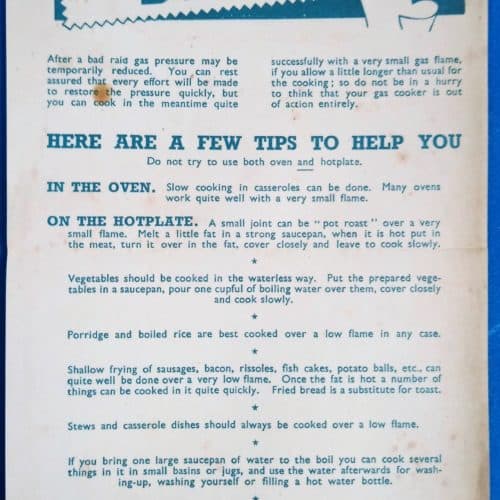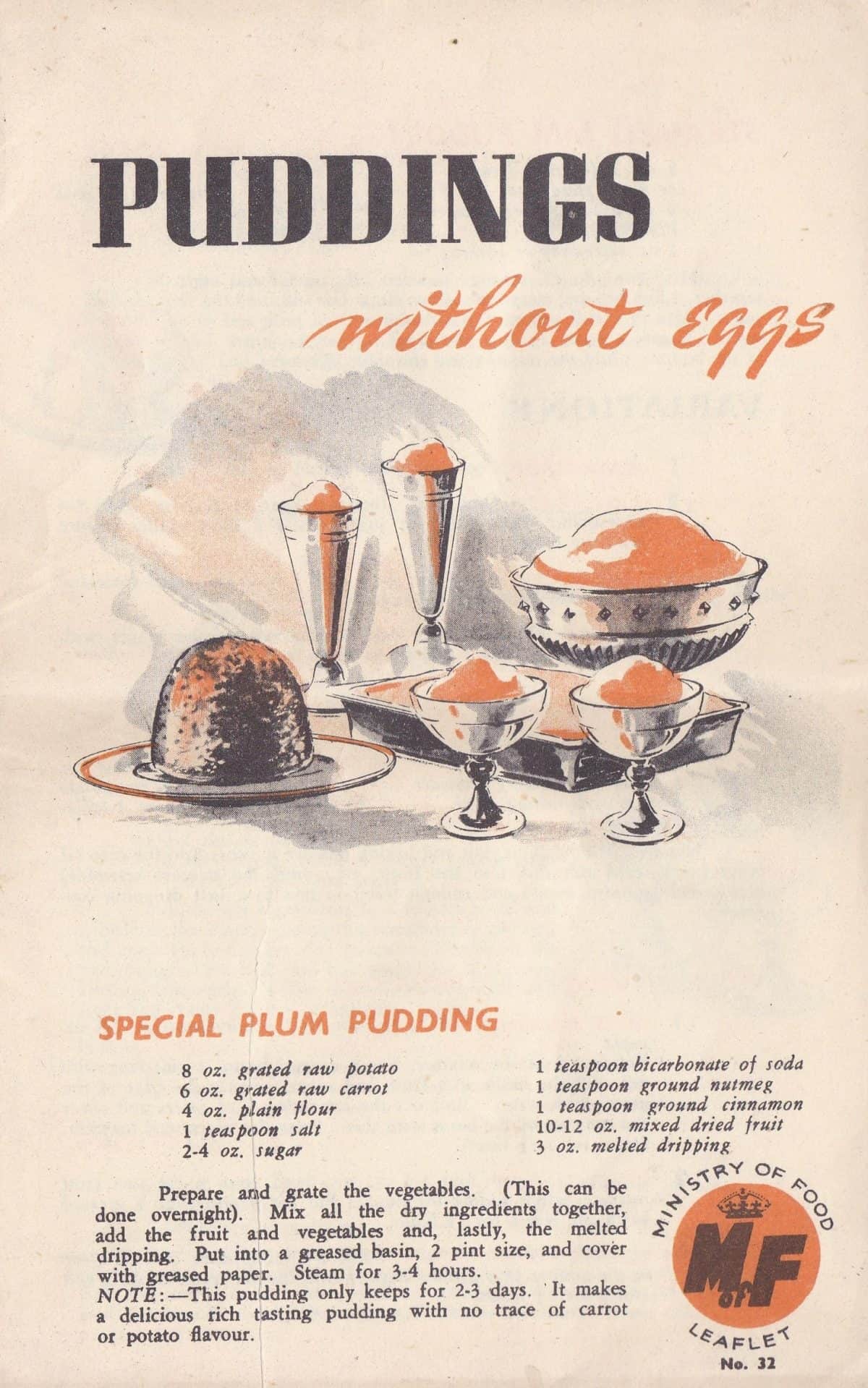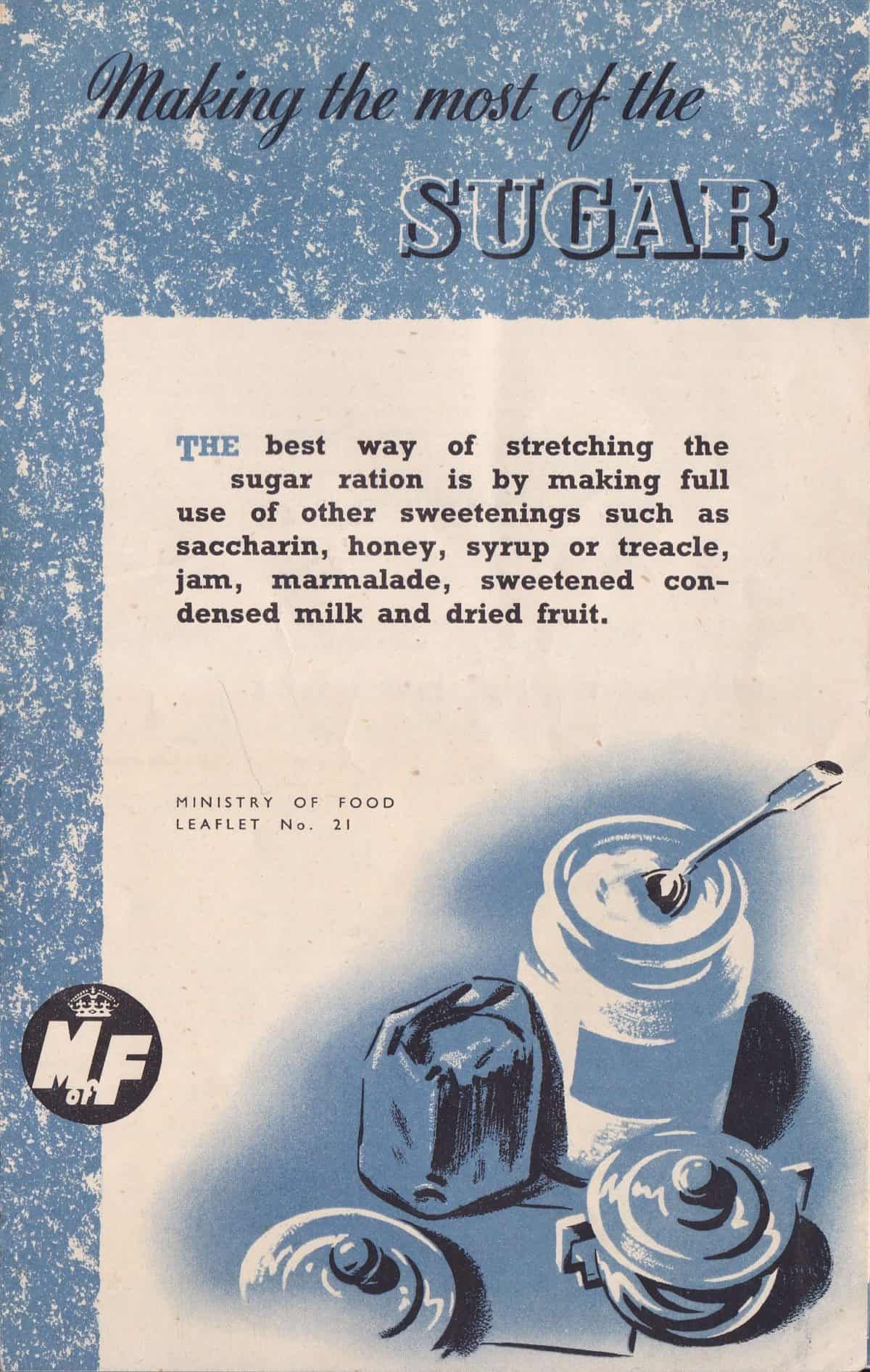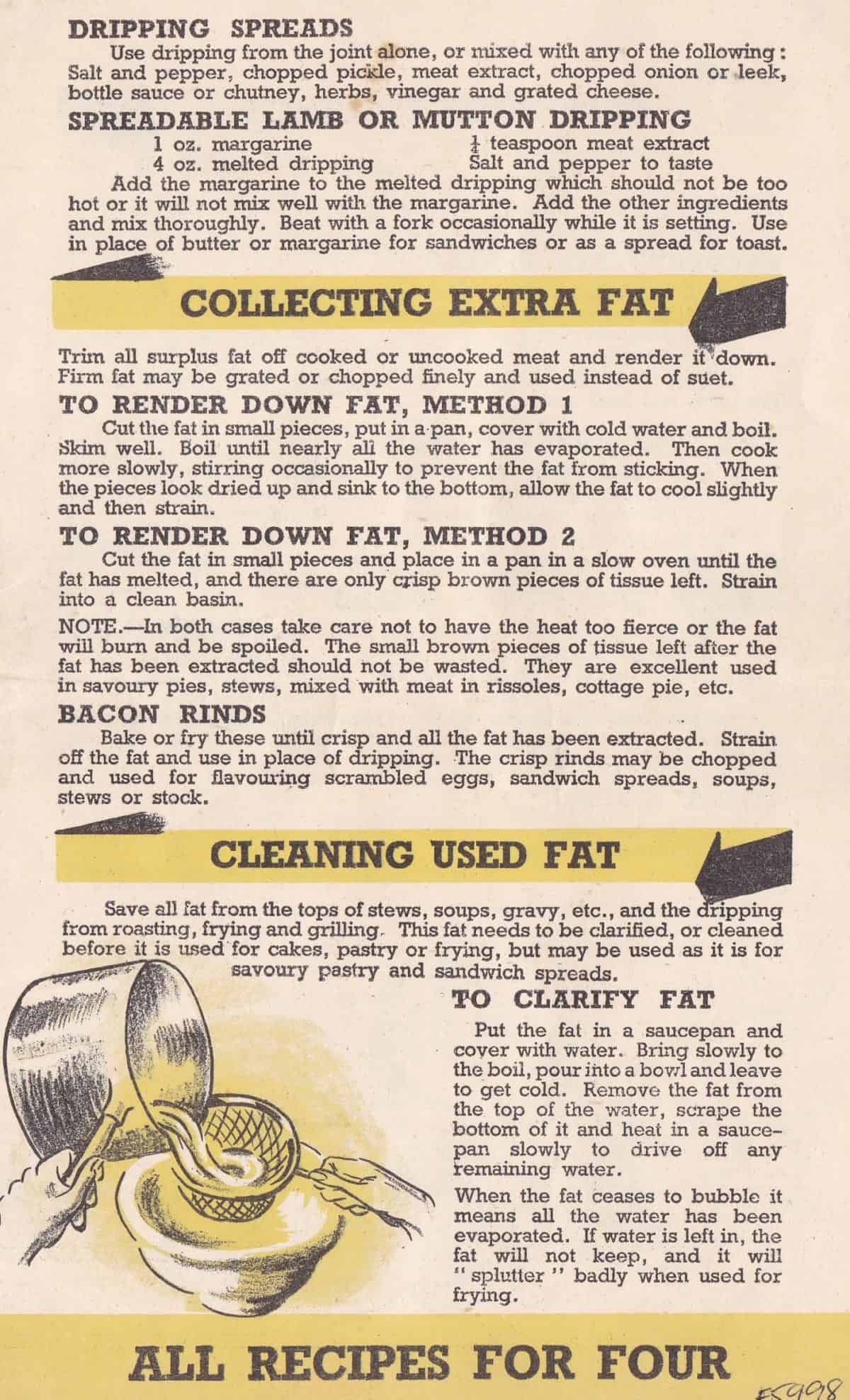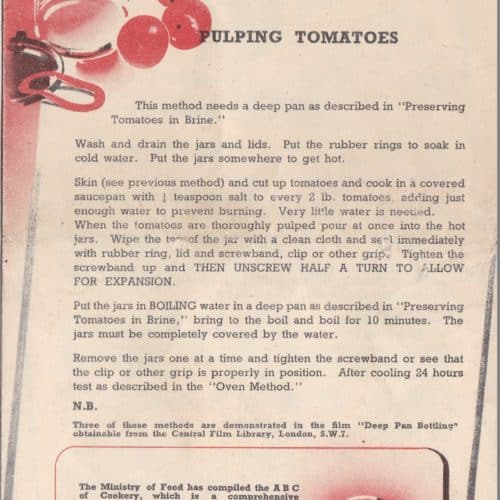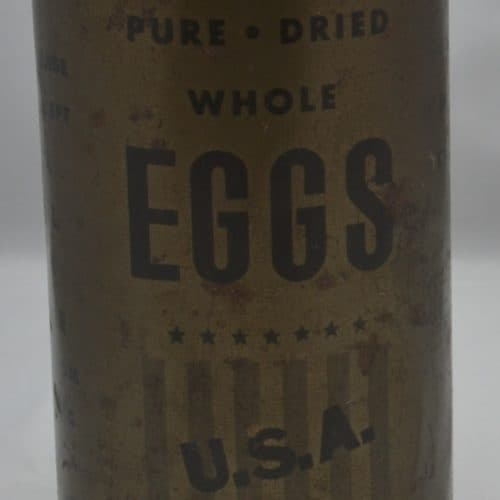WW2 18: cookery
These are ration books. Ration books were first issued in 1940 and were used until 1954, nine years after the war ended.
These ones, from 1953-54, belonged to Robert and Cecile Russell of Hawkinge, near Folkestone.
When war was declared in September 1939, Britain was importing over 50 million tonnes of food per year.
The Government was worried that German U-boat (submarine) attacks would lead to scarce food, rising prices and hoarding. So they introduced food rationing, to make sure everyone got an equal share. Clothes and petrol were rationed soon afterwards.
Every person was sent a ration book. They had to register and buy their food at their chosen shops. Most people had to visit several shops to buy what they needed as there were no supermarkets!
When people bought rations of food, the items bought were crossed off in the ration book by the shopkeeper.
Fascinating Fact
The first food items to go on ration were sugar, butter and bacon on 8th January 1940. Sweets were later rationed too!
This is a wartime cookbook called ‘Kitchen Front Recipes.’
The Front was the place where the soldiers were fighting the enemy.
So the kitchen was sometimes called the Kitchen Front, as not wasting food and using the ration wisely was also of vital importance in winning the war.
The weekly ration varied depending on what foods were available. A typical ration for an adult was:
50g butter
100g margarine
1800ml (3 pints) of milk
50g of tea
225g of sugar
50g of cheese
100g of bacon or ham
Meat to the value of 1s 2d (about the size of a small lamb chop!)
1 fresh egg
1 packet of dried egg every month
450g jam every two months
350g sweets every month
Here’s the wartime memory of a Folkestone resident, who at the age of 14, worked in F. R. Hills butchers shop in Cheriton Road…
“My job entailed delivering peoples' meat rations. The meat ration being rather meagre, it was only families who, using all their rations, could expect a joint of meat for a Sunday roast. A person living alone usually finished up with a small chump end of lamb. Rations could be supplemented with liver or other items of offal, but this was always in short supply. Sausages however were more readily available [though] due to shortages contained a lot more rusk (bread crumbs) than meat…”
Many women struggled to feed their families on the ration so many new recipes were devised to use ingredients, such as vegetables, that were available.
One example was Lord Woolton’s pie, named after the Minister of Food. This was a vegetable pie made of potatoes, swede, cauliflower, carrots and turnip, covered with pastry made from potato and a little grated cheese. It wasn’t very popular!
Fascinating Fact
Some people tried to make their own sweets during rationing. One recipe was a mix of dried milk, peppermint essence and a very small amount of sugar. Tasty!
This leaflet, distributed by the Shrewsbury Gas Light Company, was issued to assist women who may have been struggling to cook for their families due to bomb damage. Heavy bombing raids on towns and cities severely interrupted power supplies, leading to power cuts and loss of pressure to gas mains.
This leaflet provides helpful tips on how to cook on reduced power and highlights just how difficult life must have been for housewives on the Home Front. For example, the leaflet emphasises throughout the need to make extra time and to cook everything slowly!
Another tip emphasises not wasting anything. It says:
“If you bring one large saucepan of water to the boil you can cook several things in it in small basins or jugs, and use the water afterwards for washing-up, washing yourself or filling a hot water bottle.”
Along with food queues and rationing, it must have been a full-time job to run a household during World War 2!
Fascinating Fact:
Bread wasn’t rationed during the war years. But white bread was replaced by the ‘National loaf,’ a course brown bread that was almost grey in colour.
These cookery leaflets encouraged people to make rationed food last longer. They were printed by the Ministry of Food.
The leaflet on the left provides ideas on what substitutes can be used for sugar and the one on the right provides tips on recycling cooking fat. Dripping was made from animal fat and it was often spread on bread, as it was very nourishing.
Alongside rationing, people were encouraged to grow their own vegetables and to keep chickens for eggs and rabbits for the pot. Most back gardens and public spaces were turned over to producing vegetables.
Another food campaign was against kitchen waste. Instead of throwing away vegetable peelings, people were encouraged to recycle them by feeding them to pigs. Most towns had metal bins where food scraps could be deposited. Some neighbourhoods even kept and fattened their own pig. When the animal reached a good weight, the meat was shared out.
This leaflet gives instructions on preserving home-grown tomatoes.
Preserving home-grown fruit and vegetables was considered to be a key element of the Kitchen Front and the war on waste. People were also encouraged to go into the countryside and pick blackberries and other wild fruit.
As sugar was rationed, records had to be kept of all fruit preserved and sold. From 1940, canning community centres were set up, where people could take their excess home-grown fruit and vegetables to be preserved in cans and jars. This was done under the auspices of the Women’s Voluntary Service (WVS) and the Women’s Institute (WI).
It's estimated that by 1943 over a billion jars and cans of food had been preserved by the allied nations.
Home-grown fruit and vegetables that couldn’t be canned was collected by members of the WVS and WI and sold at markets, ensuring that as little as possible was wasted.
Fascinating Fact:
At the beginning of the war, in 1939, the Women’s Institute secured sugar supplies from the Ministry of Food and preserved 450 tons of fruit as jam.
This is a tin of dried eggs. It was sent to the UK from the USA as part of the Lend-Lease programme: America provided weapons and food aid for its European war allies.
One Folkestone resident who was a child during the war remember receiving a food parcel towards the end of the war from Canada:
“As the war came to a close food parcels from Canada arrived at the school. Every child received a small bar of chocolate. Chocolate was a wonderful new experience for all of us.”
Dried eggs were a vital protein substitute and used in all sorts of wartime cooking including cakes. One can or packet of dried eggs would contain about 12 reconstituted (dried) eggs.
One dried egg recipe was called Mock Fried Egg, where a circle was cut out of a slice of bread and dried egg was placed inside it. This was then fried in water to produce the taste of fried egg on toast. Yummy!
Food rations sent from America included luxury items like tins of peaches and ham. One Folkestone resident who was a child during the war remembers getting chewing gum from American soldiers:
“Towards the end of the war the Americans came over and it was quite common practice, and not frowned upon, for the children to go up to the American soldiers with the expression: “Got any gum chum?” After which a strip of gum would be handed to the begging child and gratefully received.”
Alongside such generosity, however, people in wartime Britain ate some very strange foods that would never have made it onto the dining table usually. These included whale meat and horse meat!
Another new food was snoek (also called snook), a fish from the waters around South Africa. It was canned and imported into Britain in huge quantities. Snoek was a type of mackerel and was heavily promoted as a source of protein. However, many people found it inedible and very oily.
Fascinating Fact:
After the war tins of snoek were sold as cat food!
This is a leaflet from the end of World War 2. It promoted recipes for sandwich spreads that people could make with ration coupons.
What kinds of sandwich spreads can you see?
Rationing continued for years after the war ended and for a time got worse!
Bread was rationed in 1946, due to a wheat shortage. It didn’t come off ration until 1948. Other items that remained on ration until the early 1950s included soap and canned fruit (until 1950), tea (until 1952) and sweets (until 1953).
Here’s the memory of one Folkestone child about the end of sweet rationing:
“Entering the corner shop with threepence to spend the first day after rationing ended was like going to paradise. My sister and I never gave a thought to the possibility that the sixpence spent by us was probably my Father's pocket money for the week. There actually wasn't much choice as making sweets was low on the list of priorities at this time.”
The last foods to come off ration were meat and bacon on 4th July 1954.
Fascinating fact
Although rationing was disliked by the British people it had health benefits. Inequalities in diet between rich and poor were reduced because everyone had the same ration. People ate less meat, sugar and fats and increased their vegetable intake, meaning they received more vitamins. Also, despite the war, infant deaths declined and life expectancy rose.



